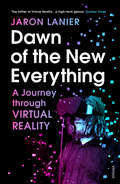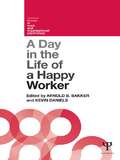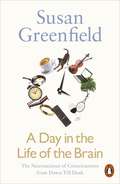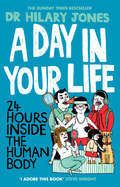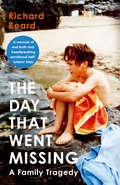- Table View
- List View
Dawn: The Origins of Language and the Modern Human Mind
by Rik SmitsIn this work, originally published in Dutch, Rik Smits theorizes that language could not have developed originally as a system of communication. It is, instead, the result of combining separate abilities, each of which developed independently to aid the survival of early humans. Lacking strength and speed, man relies on wisdom for survival. Smits theorizes that human skills in calculation and estimation continued to develop until they were sufficient to accommodate a system as complex as grammar. Only after our linguistic ability emerged could humans think logically and share our reasoning with others, at which point almost everything we now call culture began to flourish. Smits concludes that language cannot have long predated the invention of agriculture in the Middle East, some 14,000 years ago. The huge advance in civilization represented by language made abstract powers of reasoning indispensable for the first time, along with highly developed concepts of identity, past, present, and future, all of which rely upon language. This explanation of the origins of language throws new light on cave paintings by Cro-Magnon man, whose masterpieces date from about 40,000 to 15,000 years ago. Anatomically Cro-Magnons were modern humans, but they had no language in the modern sense. Their absence of language gave them no true sense of individual identity. This translation was made possible by a grant from the Dutch Foundation for Literature.
The Dawn of Language: The story of how we came to talk
by Sverker Johansson"A model of popular-science writing" STEVEN POOLEWho was "the first speaker" and what was their first message?An erudite, tightly woven and beautifully written account of one of humanity's greatest mysteries - the origins of language.Drawing on evidence from many fields, including archaeology, anthropology, neurology and linguistics, Sverker Johansson weaves these disparate threads together to show how our human ancestors evolved into language users. The Dawn of Language provides a fascinating survey of how grammar came into being and the differences or similarities between languages spoken around the world, before exploring how language eventually emerged in the very remote human past.Our intellectual and physiological changes through the process of evolution both have a bearing on our ability to acquire language. But to what extent is the evolution of language dependent on genes, or on environment? How has language evolved further, and how is it changing now, in the process of globalisation? And which aspects of language ensure that robots are not yet intelligent enough to reconstruct how language has evolved? Johansson's far-reaching, authoritative and research-based approach to language is brought to life through dozens of astonishing examples, both human and animal, in a fascinatingly erudite and entertaining volume for anyone who has ever contemplated not just why we speak the way we do, but why we speak at all.Translated from the Swedish by Frank Perry
Dawn of the New Everything: A Journey Through Virtual Reality
by Jaron LanierJaron Lanier, ‘the father of Virtual Reality … a high-tech genius’ (Sunday Times), tells the extraordinary story of how in just over three decades Virtual Reality went from being a dream to a reality – and how its power to turn dreams into realities will transform us and our world.Virtual Reality has long been one of the dominant clichés of science fiction. Now Virtual Reality is a reality: those big headsets that make people look ridiculous, even while radiating startled delight; the place where war veterans overcome PTSD, surgeries are trialled, aircraft and cities are designed. But VR is far more interesting than any single technology, however spectacular. It is, in fact, the most effective device ever invented for researching what a human being actually is – and how we think and feel.More than thirty years ago, legendary computer scientist, visionary and artist Jaron Lanier pioneered its invention. Here, in what is likely to be one of the most unusual books you ever read, he blends scientific investigation, philosophical thought experiment and his memoir of a life lived at the centre of digital innovation to explain what VR really is: the science of comprehensive illusion; the extension of the intimate magic of earliest childhood into adulthood; a hint of what life would be like without any limits. As Lanier shows, we are standing on the threshold of an entirely new realm of human creativity, expression, communication and experience. While we can use VR to test our relationship with reality, it will test us in return, for how we choose to use it will reveal who we truly are.Welcome to a mind-expanding, life-enhancing, world-changing adventure.
A Day in the Life of a Happy Worker
by Arnold B. Bakker Kevin DanielsThis edited collection brings together some of the leading researchers in the study of the daily experience of work and daily well-being. The book covers both theoretical and methodological issues involved in studying workers’ well-being as it evolves on a daily basis. Interest in the topic of daily fluctuations in worker well-being has grown rapidly over the past ten years. This is partly because of advances in research and statistical methods, but also because researchers have found that the psychological processes that influence well-being play out from moment to moment, and from day to day. Topics covered in this book include: The theoretical basis of studying work as a series of daily episodes Assessment of different components of daily well-being Factors involved in the regulation of well-being at work Qualitative and quantitative diary experience sampling and event reconstruction methods Latent growth curve modelling of diary data The final chapter of the book includes a preview of how daily methods may evolve in the future. Intended as a guide for researchers with good knowledge of field research methods, the book will be particularly useful to researchers of work-related phenomena who seek to expand their knowledge of dynamic methods in field contexts, and those who want to start using these methods. It will also be of interest to students of work psychology and organisational behaviour, and related disciplines.
A Day in the Life of a Happy Worker
by Edited by Arnold B. Bakker Kevin DanielsThis edited collection brings together some of the leading researchers in the study of the daily experience of work and daily well-being. The book covers both theoretical and methodological issues involved in studying workers’ well-being as it evolves on a daily basis. Interest in the topic of daily fluctuations in worker well-being has grown rapidly over the past ten years. This is partly because of advances in research and statistical methods, but also because researchers have found that the psychological processes that influence well-being play out from moment to moment, and from day to day. Topics covered in this book include: The theoretical basis of studying work as a series of daily episodes Assessment of different components of daily well-being Factors involved in the regulation of well-being at work Qualitative and quantitative diary experience sampling and event reconstruction methods Latent growth curve modelling of diary data The final chapter of the book includes a preview of how daily methods may evolve in the future. Intended as a guide for researchers with good knowledge of field research methods, the book will be particularly useful to researchers of work-related phenomena who seek to expand their knowledge of dynamic methods in field contexts, and those who want to start using these methods. It will also be of interest to students of work psychology and organisational behaviour, and related disciplines.
A Day in the Life of the Brain: The Neuroscience of Consciousness from Dawn Till Dusk
by Susan GreenfieldEach of us has a unique, subjective inner world, one that we can never share directly with anyone else. But how do our physical brains actually give rise to this rich and varied experience of consciousness? In this ground-breaking book, internationally acclaimed neuroscientist Susan Greenfield brings together a series of astonishing new, empirically based insights into consciousness as she traces a single day in the life of your brain. From waking to walking the dog, working to dreaming, Greenfield explores how our daily experiences are translated into a tangle of cells, molecules and chemical blips, thereby probing the enduring mystery of how our brains create our individual selves.
A Day in Your Life: 24 Hours Inside the Human Body
by Dr Hilary JonesHave you ever wondered why it takes so long to get out of bed in the morning? And why you always wake up bursting for a pee? Why that small blackhead has erupted into a hideous red spot overnight? And why stepping into a hot shower gives you goose bumps?Following an average family and their daily routine, Dr Hilary Jones takes you on a bold and captivating journey through the human body, answering these questions and hundreds more.From how our bodies function to why they react in certain ways, Dr Hilary tackles the questions that matter and examines what makes us tick. Fascinating and highly entertaining, A Day in Your Life reveals the incredible nature of the human body.
The Day That Went Missing
by Richard BeardSHORTLISTED FOR THE RATHBONES FOLIO PRIZE 2018SHORTLISTED FOR THE JAMES TAIT BLACK PRIZE 2018My younger brother’s name is Nicholas Beard. He was nine years old, and I was with him in the water when he drowned.On a family holiday in Cornwall in 1978, Richard and Nicholas are in the sea, jumping the waves. Suddenly and inexplicably Nicholas is out of his depth and then, shockingly, so is Richard. Only one of the brothers returns to the shore.Richard does not attend Nicholas’s funeral and afterwards the family return to Cornwall to continue the holiday. Soon they stop speaking of that day at the beach altogether. Years later, haunted by grief, Richard sets out to piece together the story. Who was Nicholas? What really happened that day? And why did the family never speak of it again?
The Day The Voices Stopped: A Memoir of Madness and Hope
by Ken Steele Claire BermanFor thirty-two years Ken Steele lived with the devastating symptoms of schizophrenia, tortured by inner voices commanding him to kill himself, ravaged by the delusions of paranoia, barely surviving on the ragged edges of society. In this inspiring story, Steele tells the story of his hard-won recovery from schizophrenia and how activism and advocacy helped him regain his sanity and go on to give hope and support to so many others like him.
Day Treatment for Children with Emotional Disorders: Volume 2 Models Across the Country
by Sara GoodmanZimet Gordon K. FarleyThe life span of day treatment for children in the United States is relatively short, covering a period of about 50 years. Although the first 20 years saw little growth in the number of centers operating around the country, the concept of day treatment was recognized by the Joint Commission on Mental Illness and Health in 1961 as the most significant treatment innovation of this century. Enthusiasm for this treatment modality gained impetus from growing dissatisfaction among many mental health care providers who had no choice but to place children in a highly restrictive hospital environment. Day treat ment did not carry the stigma associated with inpatient placement. The children could now remain with their own families and within their own communities. The parents could be actively included in their child's treatment. This new modality avoided the short- and long-term negative effects of institutionalization, and there was a fa vorable cost discrepancy between day and inpatient mental health services. In more recent years, there has been growing evidence of the efficacy of day treatment as an intensive therapeutic environment for children and their parents. Despite these advantages, day treatment has continued to be underutilized in favor of inpatient treatment by both the psychiatric community and third-party payers. Only recently is it being acknowledged by some insurers as a therapeutically sound and financially advantageous alternative to inpatient services. Conse quently, it is showing signs of intense growth nationally.
Daydreams and the Function of Fantasy
by M. RegisThis book seeks to re-define the role of fantasy in human life by overturning mainstream psychology's understanding of daydreams as being task-distracted mind wandering by proposing that all waking fantasies function to transform mood states into specific emotional reactions.
DBT-A: Ein Therapiemanual mit Arbeitsbuch auf CD
by Christian Fleischhaker Barbara Sixt Eberhard SchulzDie Arbeitsgruppe „Dialektisch Behaviorale Therapie für Adoleszente (DBT-A)“ beschäftigt sich mit der Anwendung und Weiterentwicklung der DBT-A. Die Behandlung setzt sich aus einer Einzeltherapie, Familiengesprächen, Fertigkeitentraining, Telefonberatung durch den Einzeltherapeuten und einer Supervisionsgruppe zusammen. Das Manual für Kinder und Jugendliche ist seit Jahren im Einsatz und wurde positiv evaluiert. Mit zahlreichen Materialien und Vorlagen dient es als Arbeitshilfe, um diesen systematischen Therapieansatz in der Praxis umzusetzen.
DBT and Art for Youth Suicide Prevention: When Art Saves Lives
by Marney SchorrUsing art therapy and DBT skills in combination, this book offers insight into how, together, these methods can enhance youth suicide prevention work. For therapists, practical advice on how to integrate DBT into their creative work will result in increased confidence in using DBT in their practice with young people . In this helpful and empowering book, readers are guided through the background, theory, and use of art therapy with DBT as a positive intervention.
DBT For Dummies
by Gillian Galen Blaise AguirreKeep calm, be skillful—and take control! Dialectical Behavior Therapy (DBT) is one of the most popular—and most effective—treatments for mental health conditions that result from out-of-control emotions. Combining elements of Cognitive Behavior Therapy with Eastern mindfulness practice, DBT was initially used as a powerful treatment to address the suffering associated with borderline personality disorder. It has since proven to have positive effects on many other mental health conditions and is frequently found in non-clinical settings, such as schools. Whether you struggle with depression, anger, phobias, disordered eating, or want to have a better understanding of emotions and how to focus and calm your mind, DBT practice serves the needs of those facing anything from regular life challenges to severe psychological distress. Written in a no-jargon, friendly style by two of Harvard Medical School’s finest, DBT For Dummies shows how DBT can teach new ways not just to reverse, but to actively take control of self-destructive behaviors and negative thought patterns, allowing you to transform a life of struggle into one full of promise and meaning. Used properly and persistently, the skills and strategies in this book will change your life: when you can better regulate emotions, interact effectively with people, deal with stressful situations, and use mindfulness on a daily basis, it’s easier to appreciate what’s good in yourself and the world, and then act accordingly. In reading this book, you will: Understand DBT theory Learn more adaptive ways to control your emotions Improve the quality of your relationships Deal better with uncertainty Many of life’s problems are not insurmountable even if they appear to be. Life can get better, if you are willing to live it differently. Get DBT For Dummies and discover the proven methods that will let you take back control—and build a brighter, more capable, and promising future!
DBT For Dummies
by Gillian Galen Blaise AguirreKeep calm, be skillful—and take control! Dialectical Behavior Therapy (DBT) is one of the most popular—and most effective—treatments for mental health conditions that result from out-of-control emotions. Combining elements of Cognitive Behavior Therapy with Eastern mindfulness practice, DBT was initially used as a powerful treatment to address the suffering associated with borderline personality disorder. It has since proven to have positive effects on many other mental health conditions and is frequently found in non-clinical settings, such as schools. Whether you struggle with depression, anger, phobias, disordered eating, or want to have a better understanding of emotions and how to focus and calm your mind, DBT practice serves the needs of those facing anything from regular life challenges to severe psychological distress. Written in a no-jargon, friendly style by two of Harvard Medical School’s finest, DBT For Dummies shows how DBT can teach new ways not just to reverse, but to actively take control of self-destructive behaviors and negative thought patterns, allowing you to transform a life of struggle into one full of promise and meaning. Used properly and persistently, the skills and strategies in this book will change your life: when you can better regulate emotions, interact effectively with people, deal with stressful situations, and use mindfulness on a daily basis, it’s easier to appreciate what’s good in yourself and the world, and then act accordingly. In reading this book, you will: Understand DBT theory Learn more adaptive ways to control your emotions Improve the quality of your relationships Deal better with uncertainty Many of life’s problems are not insurmountable even if they appear to be. Life can get better, if you are willing to live it differently. Get DBT For Dummies and discover the proven methods that will let you take back control—and build a brighter, more capable, and promising future!
DBT for Everyone: A Guide to the Perks, Pitfalls, and Possibilities of DBT for Better Mental Health
by Michelle Henderson Kate ShermanDBT skills can be a fantastic way to approach life's challenges. But where do you start? This down-to-earth guide walks you through the four DBT modules, mindfulness, distress tolerance, emotion regulation, and interpersonal effectiveness. Each chapter explains how to practice the key skills and dives into the authors' own experiences to explore what works, what doesn't, and which skills work best for particular challenges. Journaling prompts help you work out how to fit the skills into your own day-to-day life, so you can make changes that work for you.DBT works by helping you to understand difficult emotions and develop skills to regulate them in a healthy way. Whether you struggle with mental health difficulties, or just want to improve the way you handle everyday stress and challenges, this book will filter out the jargon and show you how to use DBT skills in real life.
DBT für Dummies (Für Dummies)
by Gillian Galen Blaise AguirreFällt es auch Ihnen manchmal schwer, Ihre Emotionen in den Griff zubekommen? Oder lassen Sie sich immer wieder von negativen Denkmustern runterziehen? Dann kann auch Ihnen die Dialektisch-Behaviorale Therapie (DBT), die Elemente der kognitiven Therapie und Verhaltenstherapie miteinander kombiniert, eine Hilfe sein! Dieser Leitfaden vermittelt leicht verständlich die Grundlagen der DBT. Erfahren Sie, wie Sie sich mit Achtsamkeit und Selbstakzeptanz das Leben leichter machen und emotionale Störungen, Depressionen, Phobien, Stress oder Angstzustände lindern können. Die Autoren liefern kreative Ideen, Behandlungspläne und Strategien und machen DBT für jeden zugänglich.
DBT-Informed Art Therapy: Mindfulness, Cognitive Behavior Therapy, and the Creative Process
by Susan M. ClarkDBT-informed art therapy encourages patients to engage with and retain the three key concepts of mindfulness, metaphorical thinking, and mastery, to better understand and control their emotions. This highly practical resource provides thorough explanations and training for successfully integrating DBT therapy into current art therapy practice.
DBT-Informed Art Therapy in Practice: Skillful Means in Action
by Emma Allen Jane DeSouza Yvette Duarte Penelope James Shelley Kavanagh Heidi Larew Scott Levson Melanie Paci Chloe Sekouri Megan Shiell Jeremy Steglitz Karin von von Daler Anthony Webster Mary Weir Tracela M. ZapataResponding to growing interest in DBT-informed art therapy, this edited guide focuses specifically on how these interventions can treat a variety of client groups. Combining the structure and skill development of DBT with the creativity and non-verbal communication of art therapy can be a significant advantage in treating patients who are resistant to talking therapy. This book includes international contributors who cover work with a wide variety of populations, such as those with suicidal behaviours, eating disorders, and personality disorders. Divided in two parts, Part I focuses purely on DBT-informed art therapy, whilst Part II brings in multi-modal DBT-informed approaches, such as poetry and movement, but all with visual art as a component.
DBT-Informed Art Therapy in Practice: Skillful Means in Action
by Emma Allen Jane DeSouza Yvette Duarte Penelope James Shelley Kavanagh Heidi Larew Scott Levson Melanie Paci Chloe Sekouri Megan Shiell Jeremy Steglitz Karin von von Daler Anthony Webster Mary Weir Tracela M. ZapataResponding to growing interest in DBT-informed art therapy, this edited guide focuses specifically on how these interventions can treat a variety of client groups. Combining the structure and skill development of DBT with the creativity and non-verbal communication of art therapy can be a significant advantage in treating patients who are resistant to talking therapy. This book includes international contributors who cover work with a wide variety of populations, such as those with suicidal behaviours, eating disorders, and personality disorders. Divided in two parts, Part I focuses purely on DBT-informed art therapy, whilst Part II brings in multi-modal DBT-informed approaches, such as poetry and movement, but all with visual art as a component.
DBT Principles and Strategies in the Multidisciplinary Treatment of Eating Disorders
by Alyssa H. Kalata Elysse Thebner MillerDBT Principles and Strategies in the Multidisciplinary Treatment of Eating Disorders is an in-depth exploration of DBT strategies and principles that can be applied by all members of a client’s multidisciplinary team, including dietitians and psychiatric providers. While previous DBT-related texts focus on therapists, counselors, and social workers, this book’s discipline-specific and cross-discipline examples and dialogue, as well as thoughtful descriptions of DBT principles and strategies create an accessible text carefully designed to benefit a wide variety of audiences.By showing the multidisciplinary application of DBT tools and techniques, this book gives providers of all disciplines a shared language and framework that can assist with multidisciplinary case conceptualization, treatment planning, and therapeutic interventions (rather than leaving providers operating in discipline-specific silos that are often atheoretical or eclectic in terms of their framework for conceptualizing and providing care). Exercises embedded throughout the text focus on helping providers implement what they are learning in their day-to-day clinical practice. The book is replete with activities that are focused specifically on assisting providers in implementing DBT strategies, like diary cards, chain analyses, exposure-based procedures, and cognitive modification procedures. Lastly, there is an emphasis on how DBT concepts and methods can be applied in different settings, especially in inpatient, residential, and partial hospitalization settings.DBT Principles and Strategies in the Multidisciplinary Treatment of Eating Disorders is an accessible, practical guide for eating-disorder professionals of all disciplines who would like to integrate DBT principles and strategies into patient care.
DBT Principles and Strategies in the Multidisciplinary Treatment of Eating Disorders
by Alyssa H. Kalata Elysse Thebner MillerDBT Principles and Strategies in the Multidisciplinary Treatment of Eating Disorders is an in-depth exploration of DBT strategies and principles that can be applied by all members of a client’s multidisciplinary team, including dietitians and psychiatric providers. While previous DBT-related texts focus on therapists, counselors, and social workers, this book’s discipline-specific and cross-discipline examples and dialogue, as well as thoughtful descriptions of DBT principles and strategies create an accessible text carefully designed to benefit a wide variety of audiences.By showing the multidisciplinary application of DBT tools and techniques, this book gives providers of all disciplines a shared language and framework that can assist with multidisciplinary case conceptualization, treatment planning, and therapeutic interventions (rather than leaving providers operating in discipline-specific silos that are often atheoretical or eclectic in terms of their framework for conceptualizing and providing care). Exercises embedded throughout the text focus on helping providers implement what they are learning in their day-to-day clinical practice. The book is replete with activities that are focused specifically on assisting providers in implementing DBT strategies, like diary cards, chain analyses, exposure-based procedures, and cognitive modification procedures. Lastly, there is an emphasis on how DBT concepts and methods can be applied in different settings, especially in inpatient, residential, and partial hospitalization settings.DBT Principles and Strategies in the Multidisciplinary Treatment of Eating Disorders is an accessible, practical guide for eating-disorder professionals of all disciplines who would like to integrate DBT principles and strategies into patient care.
DBT Therapeutic Activity Ideas for Working with Teens: Skills and Exercises for Working with Clients with Borderline Personality Disorder, Depression, Anxiety, and Other Emotional Sensitivities
by Carol LozierA collection of Dialectical Behaviour Therapy(DBT) activities presented in a fun and creative format for emotionally sensitive young people. Each activity includes concepts from each of the DBT modules: mindfulness, distress tolerance, emotional regulation, and interpersonal effectiveness. Includes activity sheets and diary cards to track progress.
The DBT Workbook for Alcohol and Drug Addiction: Skills and Strategies for Emotional Regulation, Recovery, and Relapse Prevention
by Laura J. PetracekWhen recovering from addiction and managing a mental illness, it can feel like both have the ability to take over your life. By applying the principles of Dialectical Behaviour Therapy (DBT) to the 12 Steps addiction recovery approach, this workbook equips you with the tools to regulate your emotions, develop self-management skills, reduce anxiety and stress, and feel yourself again.DBT is a combination of CBT, mindfulness, and distress tolerance skills tailored to those who feel emotions very intensely. Exploring skills and strategies drawn from DBT that work in tandem with your recovery program, this book provides a new roadmap to reduce symptoms of emotional distress and to support your sobriety and mental health.Written by clinical psychologist, Laura Petracek, this ground-breaking workbook draws on the author's clinical and lived experience of addiction recovery, bipolar disorder, and other mental health challenges.
DBT Workbook For Dummies
by Blaise Aguirre Gillian GalenAn effective skills-building resource for achieving real change with dialectical behavior therapy Dialectical behavior therapy (DBT) is the type of talk therapy with the most evidence-base for people who experience painful swings in emotions and volatile relationships. It is most commonly applied in the treatment borderline personality disorder who also experience suicidal thinking and behaviors and in recent years, therapists use it for other mental health conditions as well. With DBT, you can learn to regulate your emotions, tolerate distressing situations, improve your relationships, and apply mindfulness in your daily life. DBT Workbook For Dummies puts healing in your hands, giving you step-by-step exercises for learning these concepts and putting them to work. Great for patients, family members, and clinicians, this book is an essential resource for understanding emotions and behavior and then learning how to handle uncertainty when emotions and relationships are in flux. These clear and practical explanations and activities make it easy to move toward a new you. Learn the basic concepts of dialectical behavior therapy and apply them in your life Become more resilient by using coping skills that will help you achieve your goals Work through hands-on exercises that will help you navigate relationships, increase self-awareness, and overcome the impact of strong and painful emotions Manage mental health issues arising from intense emotions, poor self-esteem, and stressful situations Great on its own or paired with DBT For Dummies, this book will help patients, their family members, and DBT therapists in the search for concrete actions that promote thriving in the long term.


